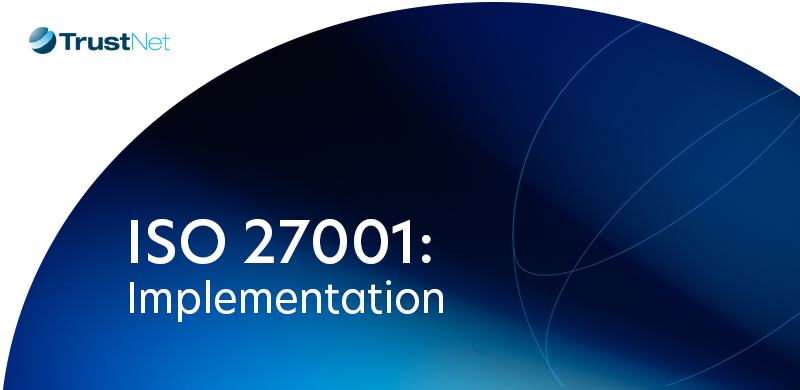GDPR Compliance Made Easy: Actionable Steps for Businesses

GDPR compliance means adhering to the General Data Protection Regulation, a set of data protection regulations that govern how businesses in the EU — or those handling EU citizens’ data — manage and protect personal information. These rules emphasize transparency and security, safeguarding individuals’ privacy while holding organizations accountable.
Why does GDPR compliance matter:
-
- It ensures businesses meet strict legal requirements and avoid hefty fines
- It protects personal data from breaches and misuse.
- It fosters trust among customers, clients, and stakeholders.
- Failure to comply can lead to severe penalties and reputational harm.
This GDPR guide for businesses offers actionable GDPR steps to ensure compliance and reinforce your organization’s protection strategy.
Step 1: Conduct a Data Audit and Map Data Flows
Before taking any further steps toward GDPR compliance, conducting a thorough data audit is essential. This process helps organizations understand what personal data they collect, where it is stored, and how it flows through different systems and departments. Without this foundational step, it’s impossible to ensure compliance or protect sensitive information.
Start by mapping every point where data enters, moves, or is stored within your operations. This practice, known as data mapping for GDPR, involves creating a clear picture of data flows, including who has access and how the information is used.
To stay organized, develop a detailed data inventory. This record should document the following:
-
- The types of personal data collected (e.g., names, email addresses, financial information).
- The sources of the data (e.g., website forms, payment systems).
- The purposes for processing (e.g., marketing, payroll, customer service).
- The storage locations, whether physical or digital.
Additionally, businesses must maintain accurate records of processing activities (ROPAs) to demonstrate compliance. These records serve as proof that your organization understands and tracks how data is handled.
Practical Example
If your company runs an online store, your data map might show that customer names, addresses, and payment details enter through checkout pages, are processed in your Customer Relationship Management (CRM) system, and stored in a secure cloud database. Identifying these flows helps pinpoint where vulnerabilities may occur, such as third-party apps with unnecessary access to payment data.
Nuances to Consider
-
- Don’t overlook older or legacy systems. They might store forgotten data that could be non-compliant.
- Regularly update your data inventory, as business processes and tools evolve continuously.
Learn more about our GDPR compliance services
Step 2: Establish a Legal Basis for Data Processing
Under GDPR, every instance of personal data usage must align with a legal basis for data processing. There are six lawful bases to justify how data is handled, ensuring businesses operate within the framework of GDPR lawful processing.
These six bases include:
1. Consent: The individual has given explicit permission for their data to be processed.
2. Contractual Necessity: Data is required to fulfill or prepare for a contract with the individual.
3. Legal Obligation: Processing is necessary to comply with legal requirements.
4. Vital Interests: Processing data is essential to protect someone’s life.
5. Public Task: Data is processed to carry out official functions or tasks in the public interest.
6. Legitimate Interests: Data is used in ways beneficial to the organization or a third party, provided it doesn’t override individual privacy rights.
When relying on consent as your justification, it must meet GDPR consent requirements. This includes ensuring individuals opt-in voluntarily and are fully transparent about how their data will be used. Consent should also be as easy to revoke as it is to grant.
Selecting the appropriate data processing justification ensures compliance while protecting individuals’ rights. Evaluating these bases for every processing activity is critical to building trust and avoiding legal pitfalls.
— Scenarios for Each Legal Basis
-
Consent: A marketing newsletter sends emails only to users who have ticked an opt-in box during registration.
- Contractual Necessity: A hotel collects payment details to confirm a guest’s booking.
- Legal Obligation: An employer processes staff tax information to comply with local tax laws.
- Vital Interests: A hospital shares patient data in an emergency medical evacuation.
- Public Task: Governments collect census data to inform public policies.
- Legitimate Interests: A retail site tracks website activity to enhance user experience, ensuring its tracking practices respect privacy norms and provide opt-out options.
— Nuances to Consider
- Consent must be unambiguous and specific. If a user opts into marketing emails, you cannot automatically use the same consent for phone promotions.
- If relying on legitimate interests, conduct a Legitimate Interests Assessment (LIA) to weigh organizational benefits against potential user impacts.
Step 3: Implement Privacy Policies and Notices
Clear and transparent privacy policies for GDPR are the backbone of any organization’s compliance efforts. These documents outline how personal data is collected, used, shared, and protected, making them essential for building trust and meeting legal obligations. Every business processing personal data must prioritize transparent data practices to ensure individuals fully understand how their information is handled.
Your privacy communication should also be accessible across all customer-facing platforms, including your website, mobile app, and physical documents. Ensuring your notices are easy to comprehend helps avoid misunderstandings and demonstrates your commitment to privacy compliance.
— Practical Example
Imagine a smartphone app that tracks fitness data. Its privacy notice should clearly mention what data types (e.g., steps, heart rate) are collected, how these are stored (e.g., encrypted database), and the purposes (e.g., creating fitness reports).
— Nuances to Consider
- Make your privacy notice as user-friendly as possible. Avoid legal jargon; for instance, replace “data controllers” with “we” to promote clarity.
- Tailor your notice per user demographic. A children’s app should use age-appropriate language.
Step 4: Address Data Subject Rights
One of the cornerstones of GDPR is protecting the rights of individuals, known as data subject rights under GDPR. These rights empower individuals to control how their personal data is used, and every organization must be equipped to uphold them effectively.
Key rights include:
-
- Right to access personal data: Individuals can request details about what personal data is being processed and why.
- Right to rectification: They can ask for corrections to inaccurate or incomplete information.
- Right to erasure (or “right to be forgotten”): Individuals can request the deletion of their data under specific conditions.
- Right to data portability: This allows individuals to receive their data in a commonly used format and transfer it to another provider.
To manage these rights, establish clear processes for handling Subject Access Requests (SARs). Actionable steps include:
-
- Setting up a centralized system to log and track SARs.
- Designating a dedicated team or contact point for SAR processing.
- Training staff to recognize and respond to requests within the required timeframe.
- Ensuring secure methods for data sharing and verification to prevent unauthorized disclosures.
— Practical Example for Rights Management
Suppose a customer of an e-commerce platform demands their purchase history. The business could have an online portal where users request, download, or manage their data.
— Scenarios for Implementing Rights
-
- Right to rectification example: Correcting an error in an employee’s bank details to ensure accurate salary payments.
- Right to erasure example: A former webinar attendee requests deletion of their data when no ongoing subscription exists.
By prioritizing these processes, your organization can handle requests efficiently, maintain compliance, and foster trust with data subjects.
Step 5: Strengthen Data Security Measures
Strict data security measures for GDPR protect sensitive information and are critical for meeting compliance standards and maintaining trust with customers. A combination of technical and organizational safeguards is essential to protecting personal data effectively.
Key actions include:
-
- Encryption: Encrypt sensitive data both at rest and in transit to reduce risks in case of unauthorized access.
- Access controls: Restrict access to personal data based on roles and responsibilities to minimize exposure.
- Regular updates: Keep software, systems, and tools updated to protect against vulnerabilities.
- Employee training: Educate staff on best practices for data security and recognizing threats, such as phishing attacks.
To ensure ongoing compliance, organizations should conduct regular security assessments to identify potential risks and address weak points proactively. Additionally, creating a comprehensive breach response plan is vital. Under GDPR, businesses must notify the appropriate authorities within 72 hours of detecting a breach. Your breach response plan should include clear protocols for incident detection, root cause analysis, and communication.
Elevating Your GDPR Compliance Journey with TrustNet
Achieving GDPR compliance is an ongoing process essential to data protection for businesses and individuals. By following the outlined steps — ranging from conducting audits to strengthening security — organizations can safeguard personal data, build trust, and avoid costly violations.
While these steps provide a strong foundation, navigating regulatory requirements can still be complex. Seeking expert guidance ensures a smoother path to compliance. By leveraging modern technology and decades of experience, TrustNet helps businesses not only meet legal obligations but also demonstrate a strong commitment to privacy and transparency
Contact Our Experts today.
Subscribe to the TrustNet Newsletter
actionable cybersecurity strategies, and TrustNet’s cutting-edge solutions.




